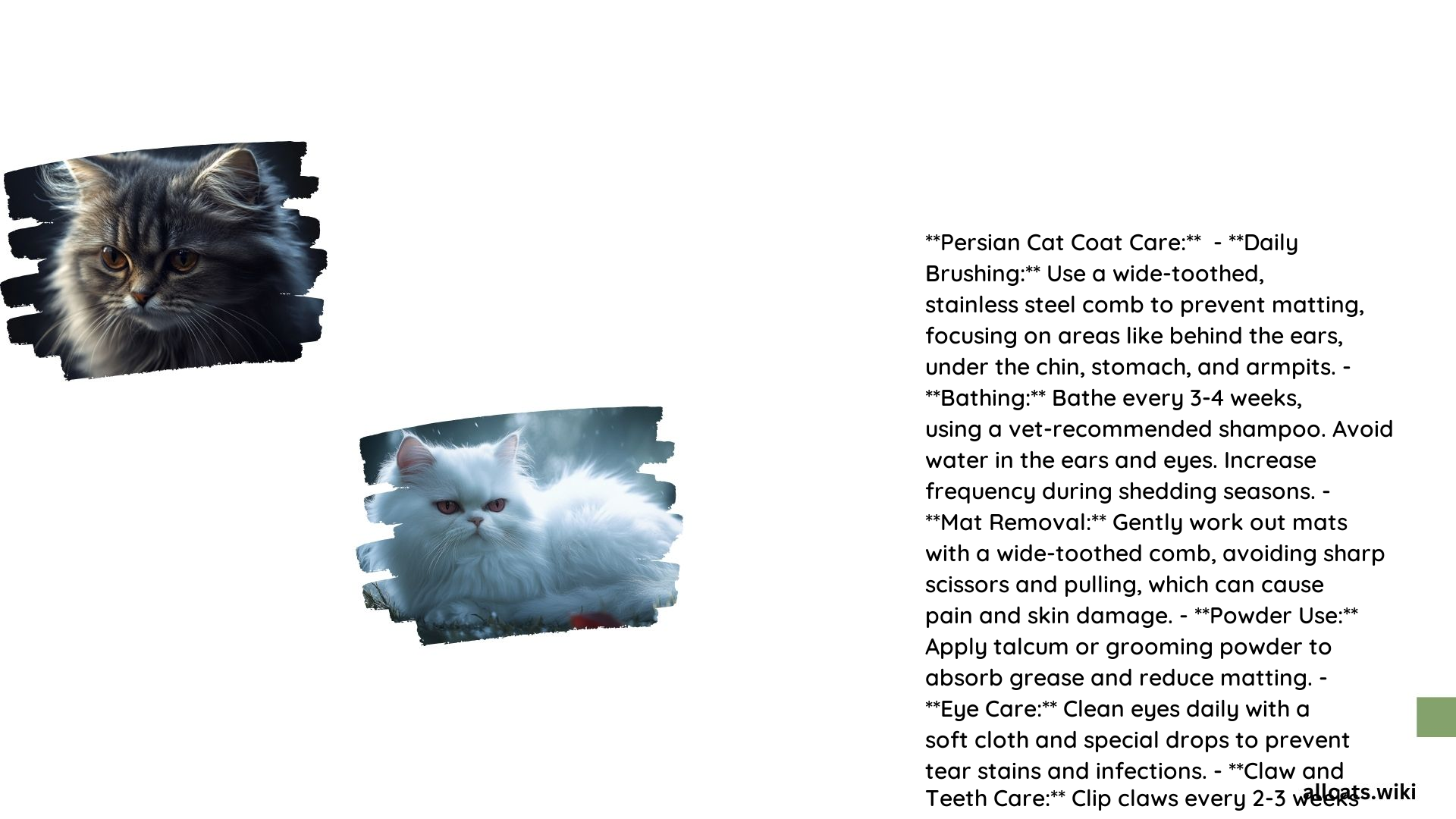Comprehensive Guide to Persian Cat Coat Care
Persian cats are known for their luxurious, long, and silky coats, but maintaining this beautiful appearance requires dedicated grooming. In this comprehensive guide, we’ll explore the essential techniques and tools needed to keep your Persian cat’s coat healthy, mat-free, and looking its best.
What are the Brushing Techniques to Prevent Matting and Tangling?
Daily brushing is crucial for Persian cats to prevent matting and tangling. Here’s a step-by-step guide on how to brush your Persian cat effectively:
-
Choose the Right Brush: Use a wide-toothed metal comb, which is the most effective tool for detangling a Persian cat’s fur. This type of comb is gentler on the cat’s skin and more efficient at removing mats and tangles.
-
Start at the Right Spot: Begin brushing at the back of the cat’s head and work your way down to the tail. This helps to distribute natural oils throughout the coat and prevents matting.
-
Focus on Problem Areas: Pay extra attention to areas that are prone to matting, such as behind the ears, under the chin, the stomach area, and underneath each arm.
-
Brush Gently: Use soft and short strokes to brush through the coat. If the cat’s hair is matted, start at the bottom of the mat and work your way up to avoid causing discomfort.
-
Brush Daily: Brush your Persian cat daily to prevent matting and tangling. This regular grooming will also help to reduce the risk of skin irritation and infections.
What is the Bathing Schedule and Recommended Products for Persian Cats?
Regular bathing is necessary for Persian cats to degrease their fur and eliminate dander, which can lead to matting and skin issues if not addressed. Here’s a guide on the bathing schedule and recommended products:
-
Bathing Frequency: Bathe your Persian cat every two to six weeks, depending on how quickly their coat becomes greasy and matted. If your cat is prone to skin allergies or has specific grooming needs, you may need to bathe them more frequently.
-
Choosing the Right Shampoo: Use a gentle, moisturizing shampoo that is suitable for your cat’s coat type, such as Artero 4 Cats Shampoo, Chris Christensen White on White or Black on Black, or a vet-recommended shampoo.
-
Additional Products: Use an organic degreaser to keep the coat silky and clean without irritating the cat’s eyes. Also, clean the cat’s eyes gently with damp cotton balls or a vet-recommended eye cleaning solution to prevent tear stains and infections.
What are the Effective Tools for Detangling Persian Cat Fur?
Maintaining a Persian cat’s coat requires specialized tools to effectively detangle and groom the fur. Here are some of the most effective tools and their features:
-
Wide-Toothed Metal Comb: Sturdy teeth spaced apart to gently detangle the fur without causing discomfort. Use this comb, starting at the back of the head and working down to the tail, using soft and short strokes, focusing on problem areas.
-
Mat Splitter: Designed to gently split mats without causing pain or discomfort. Use this tool if your cat’s hair is severely matted, starting from the bottom and working up.
-
Show Gear Classic Balltip: Used for trimming long fur around the anus to prevent feces from coming into contact with the fur, maintaining hygiene and ease of litter box use.
By following these techniques and using the right tools, you can keep your Persian cat’s coat healthy, mat-free, and looking its best. Remember, regular grooming is essential for the well-being and comfort of your feline friend.

